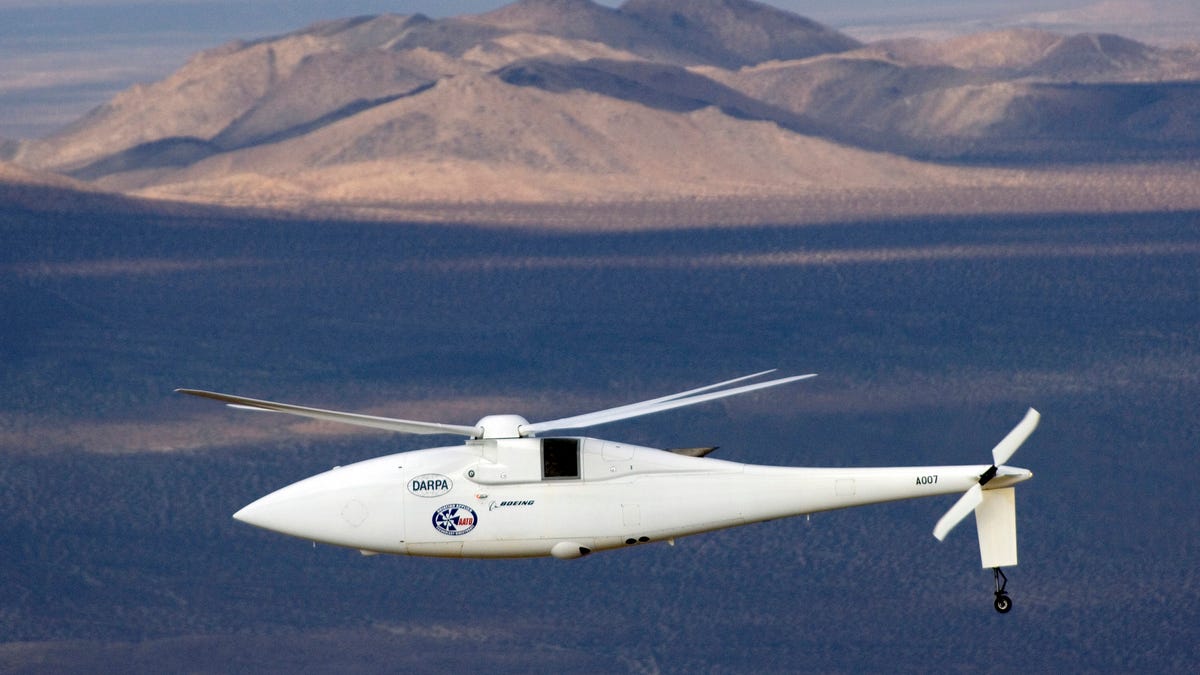Boeing looks to elevate its UAV game
The aerospace uber-contractor revs up its unmanned-aircraft pitch with a project for the Marine Corps and a deal to promote an Austrian "camcopter."

Boeing this week is touting a pair of deals focused on unmanned aerial vehicles, both of them rotorcraft.
On Monday, the aerospace behemoth said that it's getting $500,000 from the U.S. Marines Corps that will go toward a project meant to demonstrate the cargo-hauling capabilities of Boeing's A160T Hummingbird. The Marines are looking into the possibility of dispatching unmanned aircraft as cargo carriers in place of trucks driven by flesh-and-blood troops.
By February, Boeing will have to demonstrate that, in six hours or less per day for three consecutive days, the 35-foot-long A160T can tote a 2,500-pound payload from one simulated forward operating base to another. The turbine-powered A160T, which can fly autonomously, debuted in 2007 and can cruise at 140 knots. Besides carrying supplies, it could also be equipped with surveillance gear.
In a test of its aerial prowess last summer, the A160T flew for 18.7 hours without refueling while carrying a 300-pound internal payload, and still had 90 minutes of fuel left in its tank. Boeing says that the flight, in May 2008, set a world endurance record for UAVs in its class.
On Tuesday, Boeing announced a deal with Austria's Schiebel Industries to help market and support Schiebel's S-100 Camcopter, which the companies are touting as a "stabilized video system for surveillance and reconnaissance." Schiebel is keen to find customers in the U.S. government and military sectors, and Boeing of course is a defense contractor of long standing. (Schiebel says civilian customers are also welcome.)
The S-100, which has a rotary engine and can fly autonomously, has a data link range as great as 200 kilometers. The primary payload bay can handle up to about 100 pounds, though Schiebel says the standard payload is about half that, at which weight the S-100 flies for about 6 hours. The UAV is about 10 feet long and 3.5 feet high.
In June, Boeing established an Unmanned Airborne Systems division, in a sign of the growing importance of UAVs (or UASes, in Boeing's parlance) to its overall business. The division also oversees the smaller, fixed-wing ScanEagle UAV, which has been deployed with the Marines in Iraq, from Boeing's wholly owned InSitu subsidiary.
"This teaming agreement (with Schiebel) allows us to offer another quality unmanned airborne platform to customers who depend on the intelligence these aircraft can provide," Vic Sweberg, director of Boeing Unmanned Airborne Systems, said in a statement. "It will further enable our new division to deliver innovative solutions tailored to our customers' needs and budgets."

